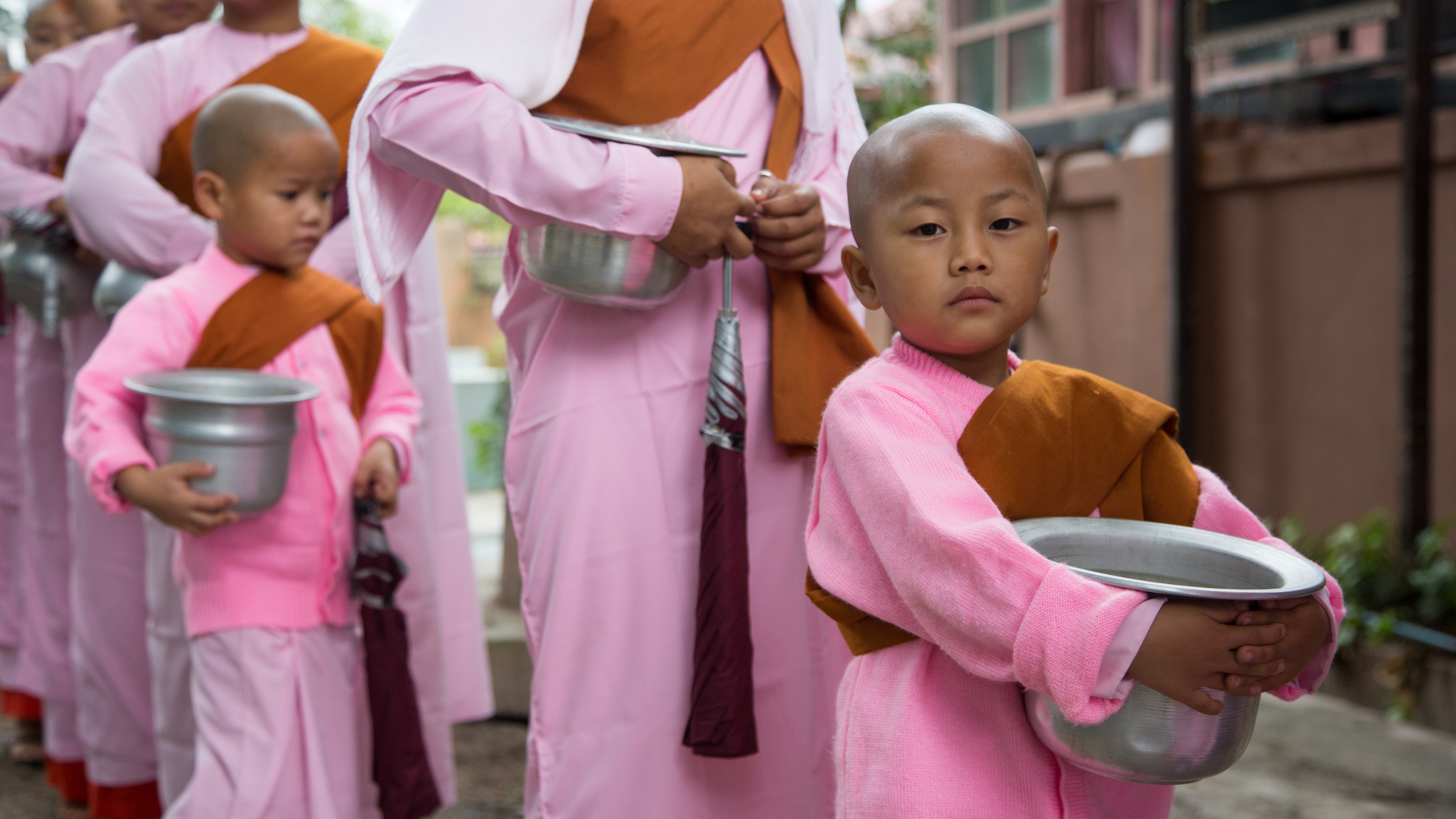
Buddhist monks walk purposefully in a single file line down their town’s streets. The monks pause intermittently to have rice scooped into their round alms bowl by men and women positioned along the road in intervals, almost like water stations in marathons.
It’s the early hours of the morning, and as sunlight begins its slow, arced journey across the Southeast Asian skies, monks are gathering their food for the day. The oldest monk leads the group forward in their procession. The age, and the seriousness, of the monks decreases along the line.
I power walk beside and behind them, taking photos and observing the daily ritual I’ve seen throughout my life in Asia. I wonder if the younger boys, who look to be seven or eight years old, are thinking, “I hope enough people want to make merit today. Otherwise, our bowls and our bellies will be empty.”
These same boys grin at me, their boyish natures transcending their monk robes. I smile and pray that they will know their Creator who created them for so much more than this.
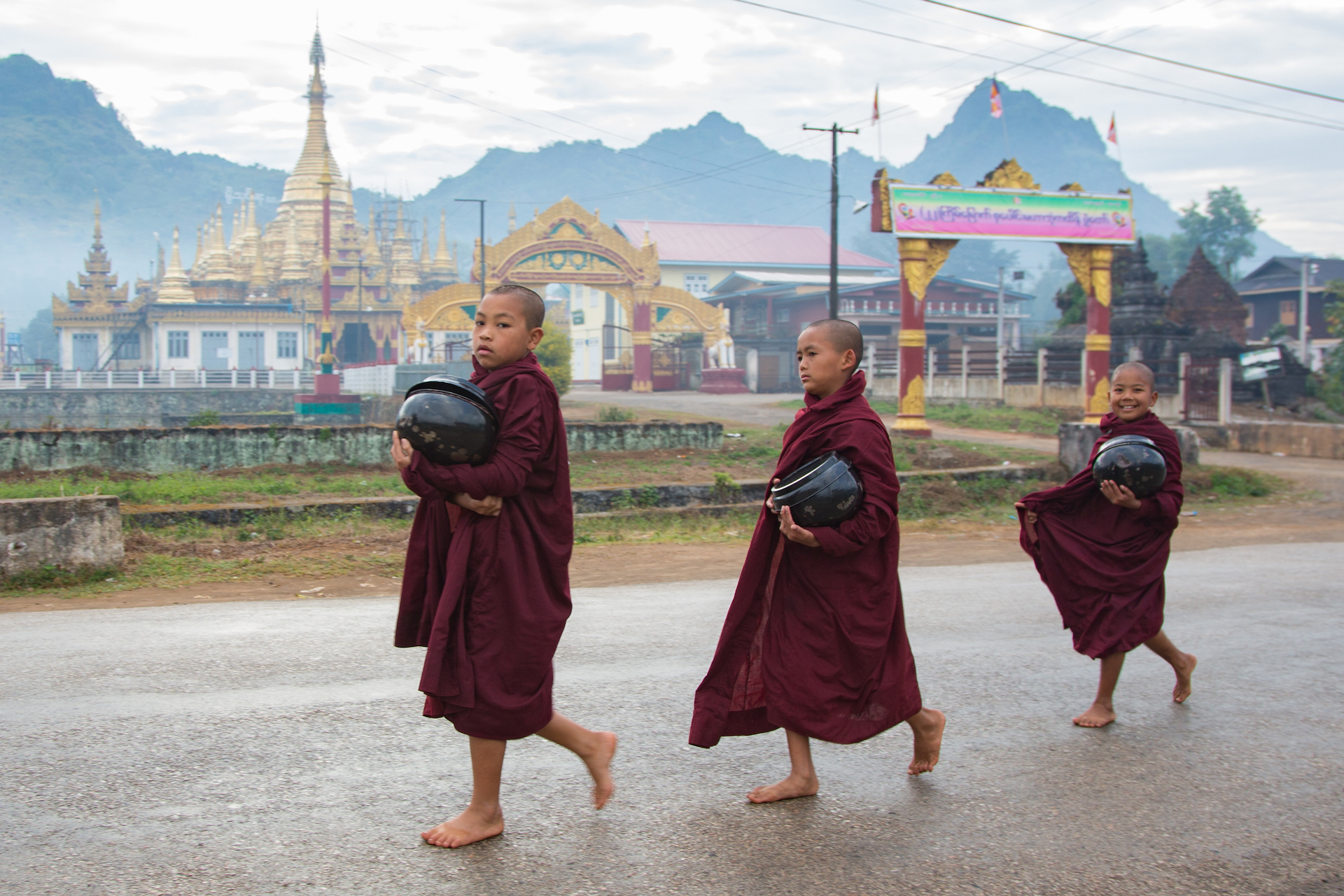
Photo by Caroline Anderson.
Why Do Monks Receive Alms?
A Buddhist monk believes their primary purpose is to practice and preserve Buddhist teaching while living an ascetic life.
When committing to becoming a Buddhist monk, the individual agrees to lay aside worldly comforts to pursue enlightenment. This means forgoing incomes, salaried positions, and material comforts to exemplify the Buddhist way of life to their communities. Some commit their entire lives to being a monk. Others serve only a few months up to a few years.
Historically, the first Buddhist monks were homeless—before the days of monasteries. Their only possessions were their robes and begging bowls. Today, monks live in temple complexes funded by donations from the community.
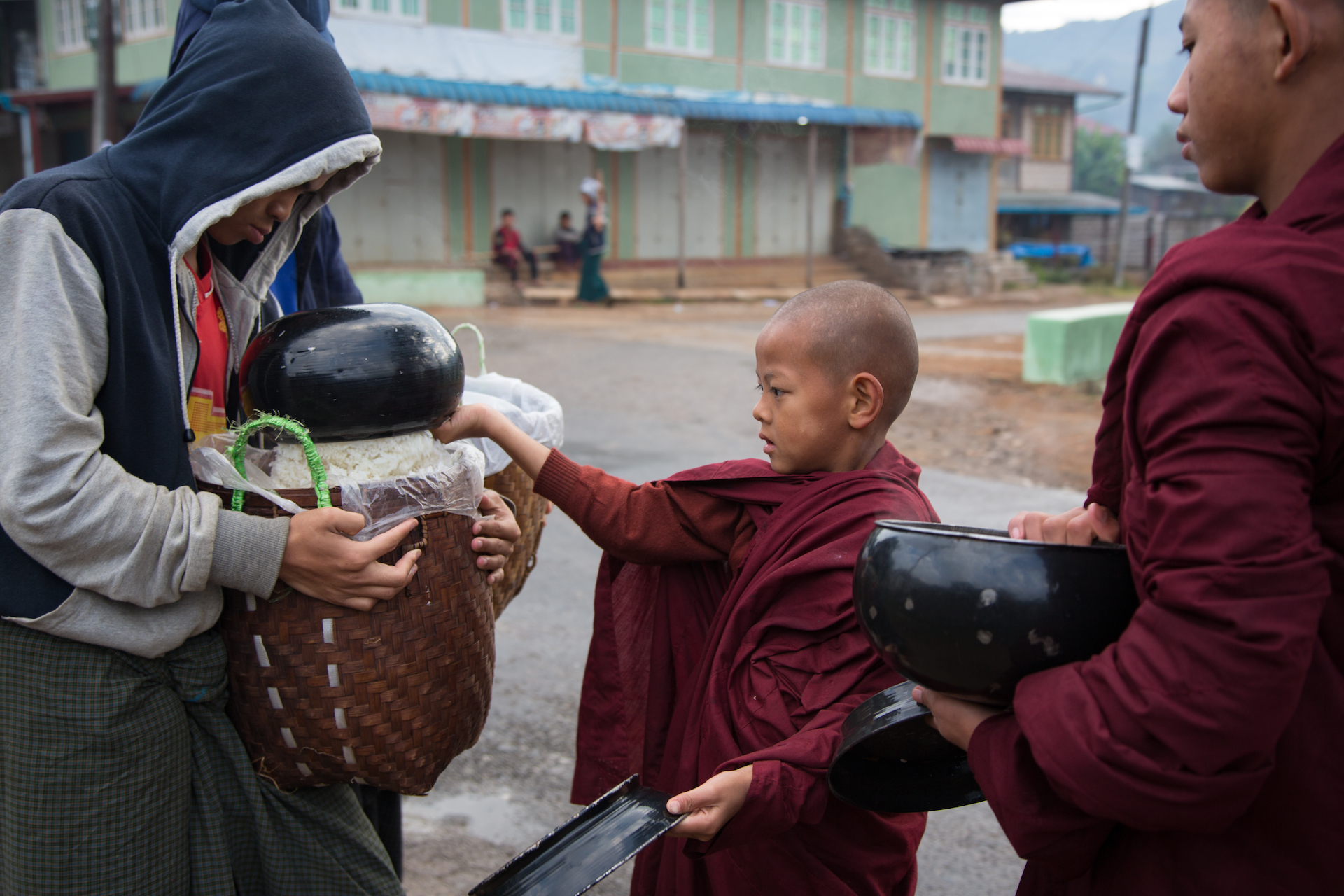
Photo by Caroline Anderson.
Giving alms to Buddhist monks is believed to foster a spiritual connection between monks and the lay Buddhist. The community believes they bear the responsibility to care for the physical needs of monks, and monks are expected to care for the spiritual needs of the community in return.
Monks are a conduit through which a Buddhist can earn merit. A Buddhist layperson makes merit by giving gifts and financial support to monks. As they empty their cup of sustenance into the monk’s bowl, they receive spiritual blessing from the monk. This almsgiving furthers a Buddhist’s journey toward Nirvana, or true enlightenment.
Receiving alms frees up monks to serve Buddhists in their community. In Thailand, monks are often invited to bless and invoke protection over a new home. They impart wisdom and provide counsel to those who seek guidance. Some monastic communities are involved in teaching and operating Buddhist schools.
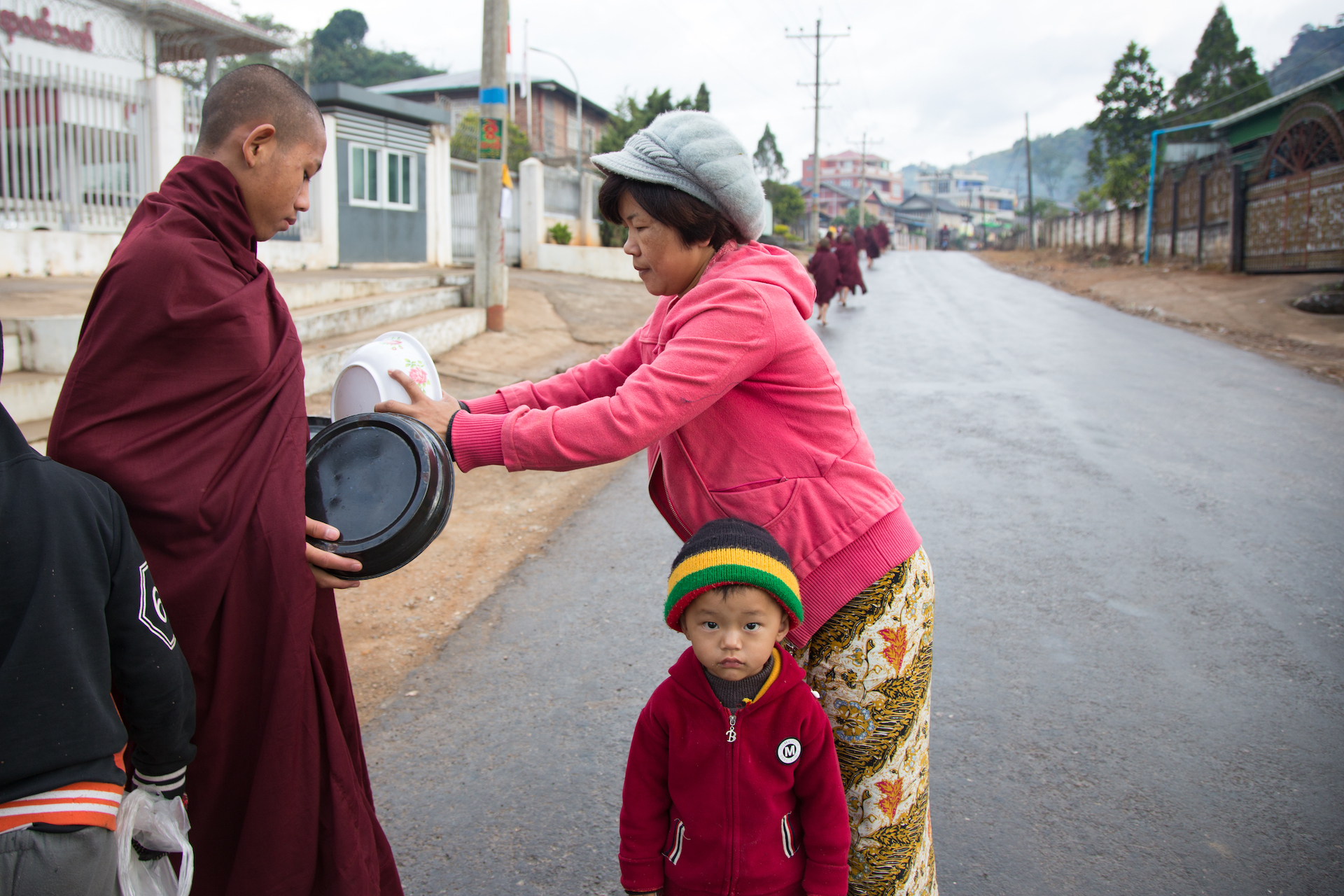
Photo by Caroline Anderson.
Alms are usually food but can also be flowers, incense sticks, towels, or other basic necessities. The monks will not speak to or thank the almsgiver because alms are not seen as charity. Instead, alms are an element of a symbiotic spiritual relationship between a monk and a lay Buddhist.
Monks who live in countries that practice Theravada Buddhism—places like Thailand, Myanmar, Cambodia, Sri Lanka, and Laos—still rely on alms for most of their food. Almsgiving in countries that practice Mahayana Buddhism has essentially died out. (You can read about the difference between Theravada and Mahayana Buddhism here). In East Asian countries, giving alms was nearly impossible due to great distances between monasteries and other communities. And, in these nations, giving alms wasn’t as closely associated with gaining merit. Asking for food was, traditionally, more looked down upon.
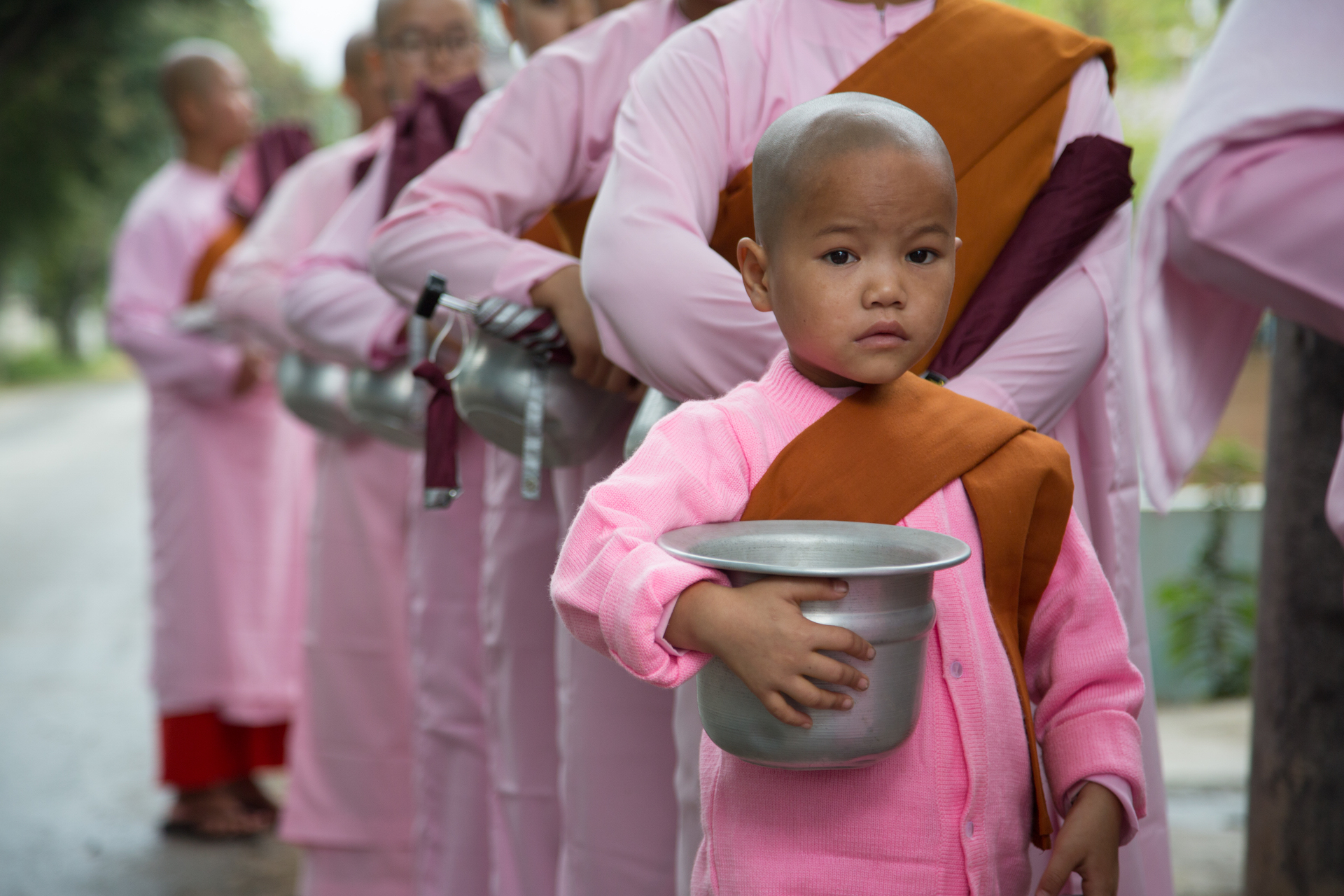
Photo by Caroline Anderson.
Are Alms and Tithes the Same Thing?
The tradition of giving alms is hardly exclusive to Buddhists. Catholics, Muslims, Jews, and Hindus practice some form of almsgiving. Though many people in other faiths give to advance their personal standing, gain merit, show their devotion, or secure a place in heaven, as Christians living with an Old Testament and New Testament view of the gospel, we give out of thanksgiving.
In the Old Testament, a tithe came from a person’s agricultural profits and was the means for God’s people to express their dedication and thanksgiving to God. Since the time of Cain and Abel, people brought forth offerings to the Lord (Gen. 4). Jacob made a vow to give the Lord a tenth of what he made (Gen. 22:20–22). When the Lord revealed his Law to Moses, he established a system of tithes to support the Levites and establish a pattern of expressed knowledge that everything belongs to and comes from the Lord (Deut. 12, 14, 26).
“Jesus generously gave his life on our behalf, so we give in response to his model of openhandedness.”
Tithing continued in the New Testament, but instead of a requirement of the Law, it became a gift given freely from the heart. With Christ’s establishment of the New Covenant, we now give out of response to the beauty of the gospel: Jesus generously gave his life on our behalf, so we give in response to his model of openhandedness. Our giving demonstrates that where our treasure is, our hearts are also (Matt. 6:21). Therefore, we cheerfully—not out of compulsion or requirement—give what we’ve decided in our own hearts (2 Cor. 7:9).
As Christians, we don’t give tithes to gain merit or fulfill a law. We give because we’ve been abundantly blessed by our Creator and we are acknowledging his preeminence in our lives.
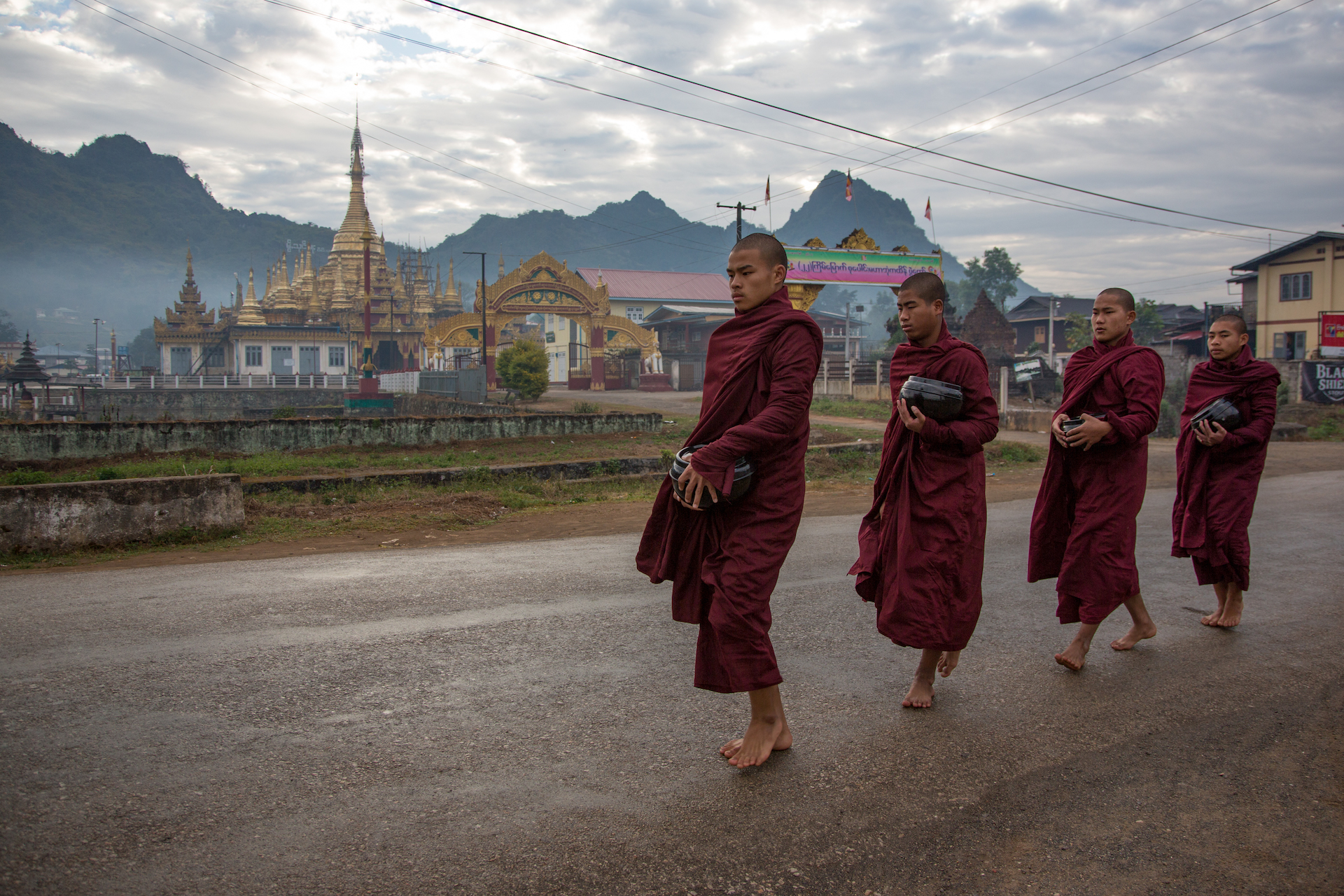
Photo by Caroline Anderson.
The Answer for Alms
If you’re going on a short-term trip in a Buddhist country, ask your host missionary what the local customs are in regard to giving alms. On your trip, consider prayer walking in the early morning hours when monks are out receiving alms. Pray for both the monks and the almsgivers to hear that Christ’s gift of salvation is ongoing and eternal. His sacrifice paid the ultimate price to atone for our sin.
On your trip, ask Buddhists about their almsgiving—how often do they give, what do they give, and how do they feel after they’ve given. Then, share about the motivation and freedom that we, as Christians, have in giving tithes, which are given out of love for the One who gave the ultimate gift.
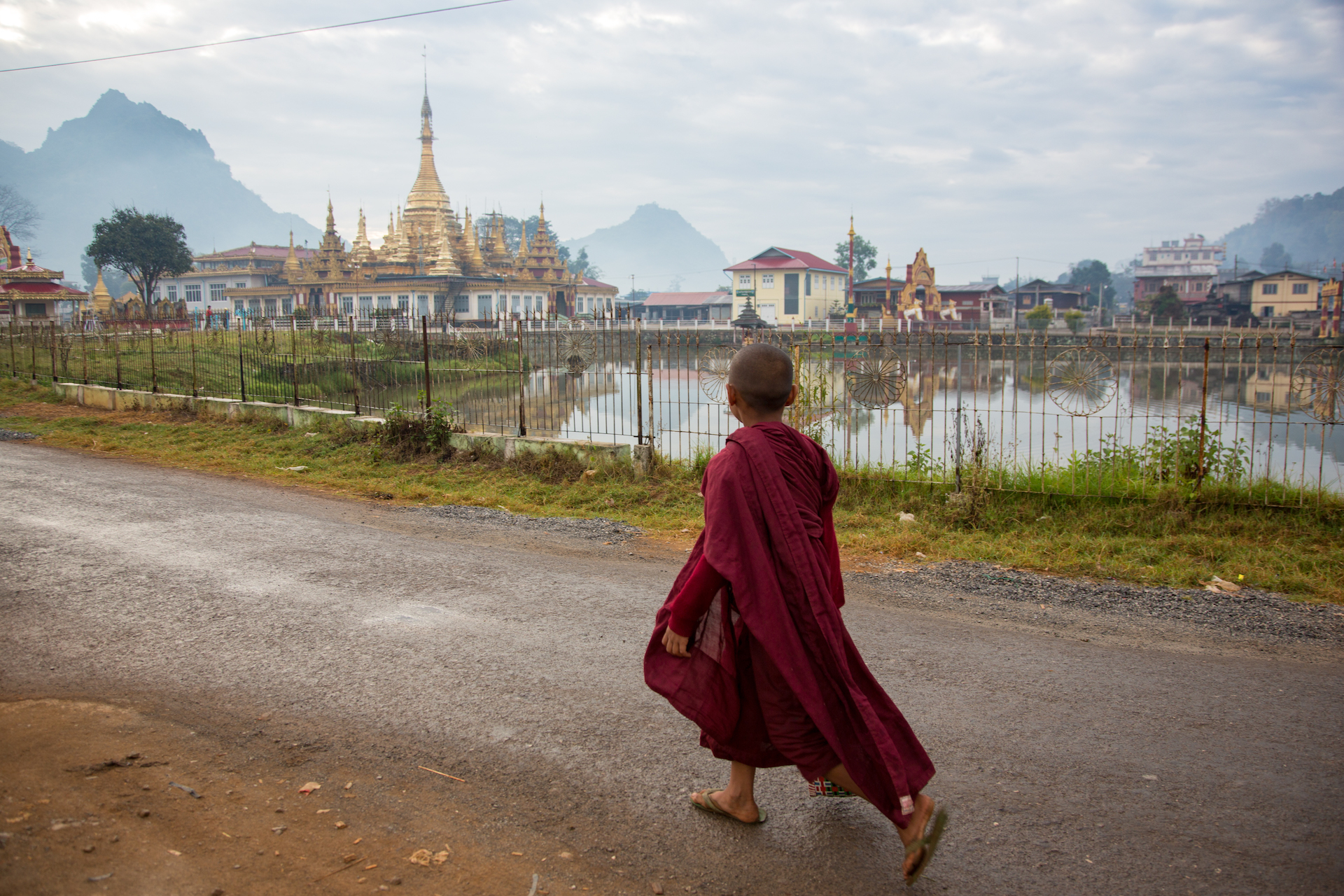
Photo by Caroline Anderson.
Caroline Anderson is a writer and photographer with the IMB. She currently lives in Southeast Asia. Her childhood in Asia consisted of two important ingredients: braving hot chili peppers and telling people about Jesus.

